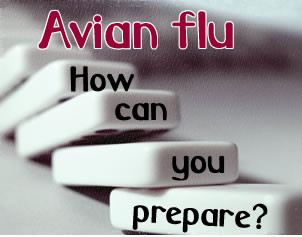 Below is information from www.pandemicflu.gov about how avian flu is carried and spread among migratory birds.
Below is information from www.pandemicflu.gov about how avian flu is carried and spread among migratory birds.
What kinds of wild birds primarily carry avian influenza?
Most avian influenza viruses have been isolated from wild waterfowl (ducks, geese, and swans) and shorebirds (wading birds), gulls and terns. With rare exceptions, the thousands of flu isolates found in wild birds have been low pathogenic avian influenza and have rarely caused signs of illness in wild birds.
The occurrence of avian influenza in wild ducks in North America reaches its height in late summer and early fall. At other times of the year, infection rates are usually less than 1 percent. In shorebirds, infection rates are highest during the spring migration, although in comparison with waterfowl, their infection rates are much lower.
Can migratory birds bring highly pathogenic avian influenza (HPAI) H5N1 to North America?
Migratory birds usually travel thousands of miles over the same routes in their annual migrations. In the Northern Hemisphere, birds begin moving south during August and September of each year. North American migratory birds that spend the winter in Asia may come into contact with potentially infected domestic or wild birds during the winter months.
In spring, migratory birds will migrate north to their breeding grounds in eastern Russia, Alaska and Canada. Migratory birds infected with the highly pathogenic avian influenza (HPAI) H5N1 returning from Asia could potentially interact with other North American wild birds as they commingle on the breeding grounds.
Bird migration is only one possible route of introduction of HPAI H5N1 into North America. Illegal smuggling of birds and poultry products, travel by infected people, or people traveling with virus-contaminated articles are more direct, and possibly more likely, means of introducing the new strain of HPAI H5N1 virus into the United States.